Generative Agents:
Interactive Simulacra of Human Behavior
Park et al.
🤖
Motivation &
Related Work
Creation of an Interactive Artificial Society
-
Applications:
-
Virtual worlds, metaverses
-
Prototyping tools
-
Creative partners
-
-
Prior agent approaches have limitations:
-
Rules-based behaviors
-
Reinforcement learning successes are limited
-
Cognitive architectures require manual encoding
-
Related Work
-
Virtual agents and non-player characters
-
Cognitive architectures like SOAR, ACT-R
-
Interactive machine learning systems
-
Recent uses of LLMs for behavior modeling
🏡
Smallville
Agent Behaviors and Interactions
-
Unique sprite-based avatar
-
Seed Memories
-
Communicate via natural language
-
End users issue commands
-
Environmental affordances
-
Navigation and movement


John Lin is a pharmacy shopkeeper at the Willow Market and Pharmacy who loves to help people. He is always looking for ways to make the process of getting medication easier for his customers; John Lin is living with his wife, Mei Lin, who is a college professor, and son, Eddy Lin, who is a student studying music theory; John Lin loves his family very much; John Lin has known the old couple next-door, Sam Moore and Jennifer Moore, for a few years; John Lin thinks Sam Moore is a kind and nice man; ...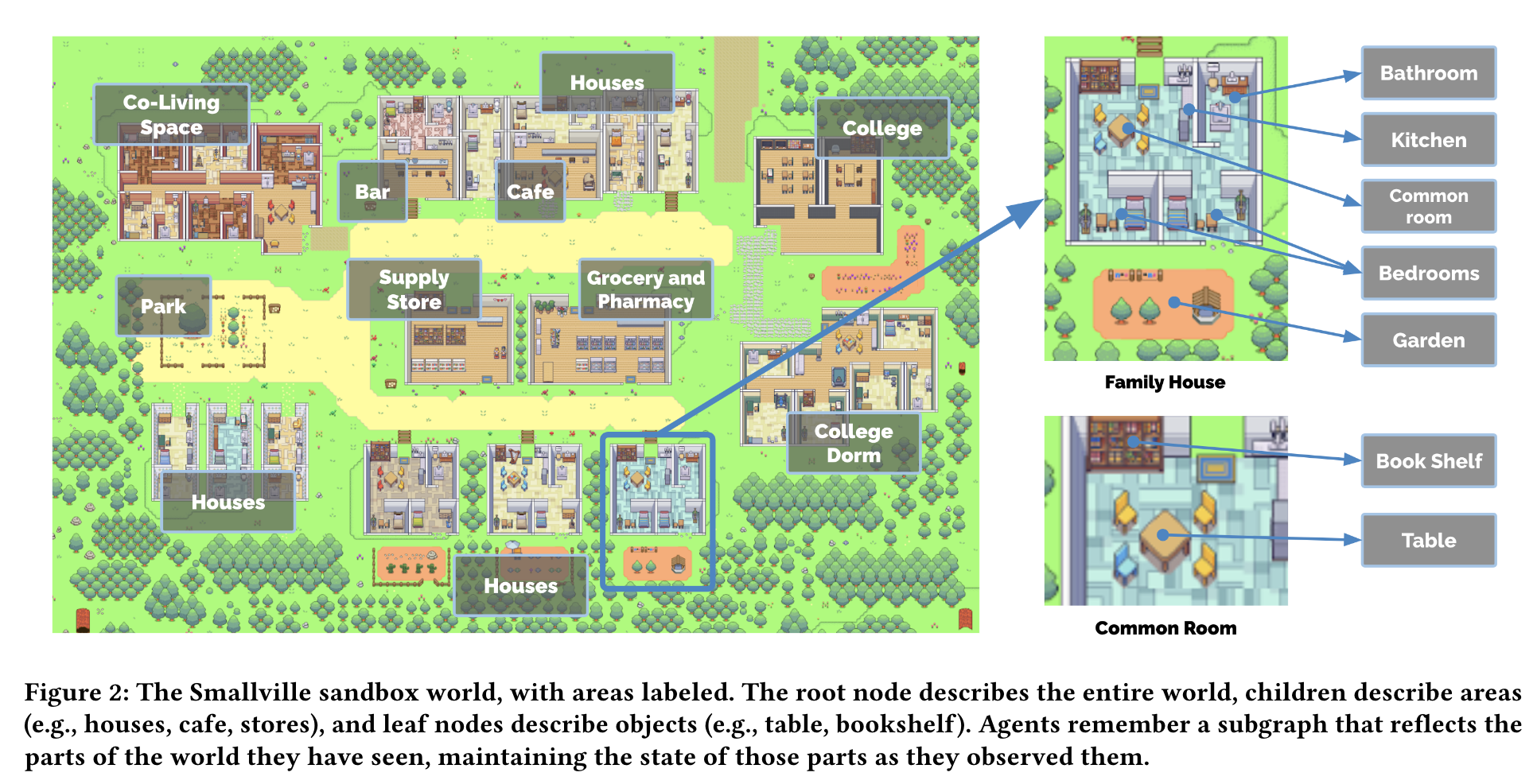
Environment Interactions
-
Perceive surrounding spaces
-
Navigate map and enter buildings
-
Influence state of objects
-
React to user changes in environment
-
Maintain representation of seen areas
Example "Day in the Life"
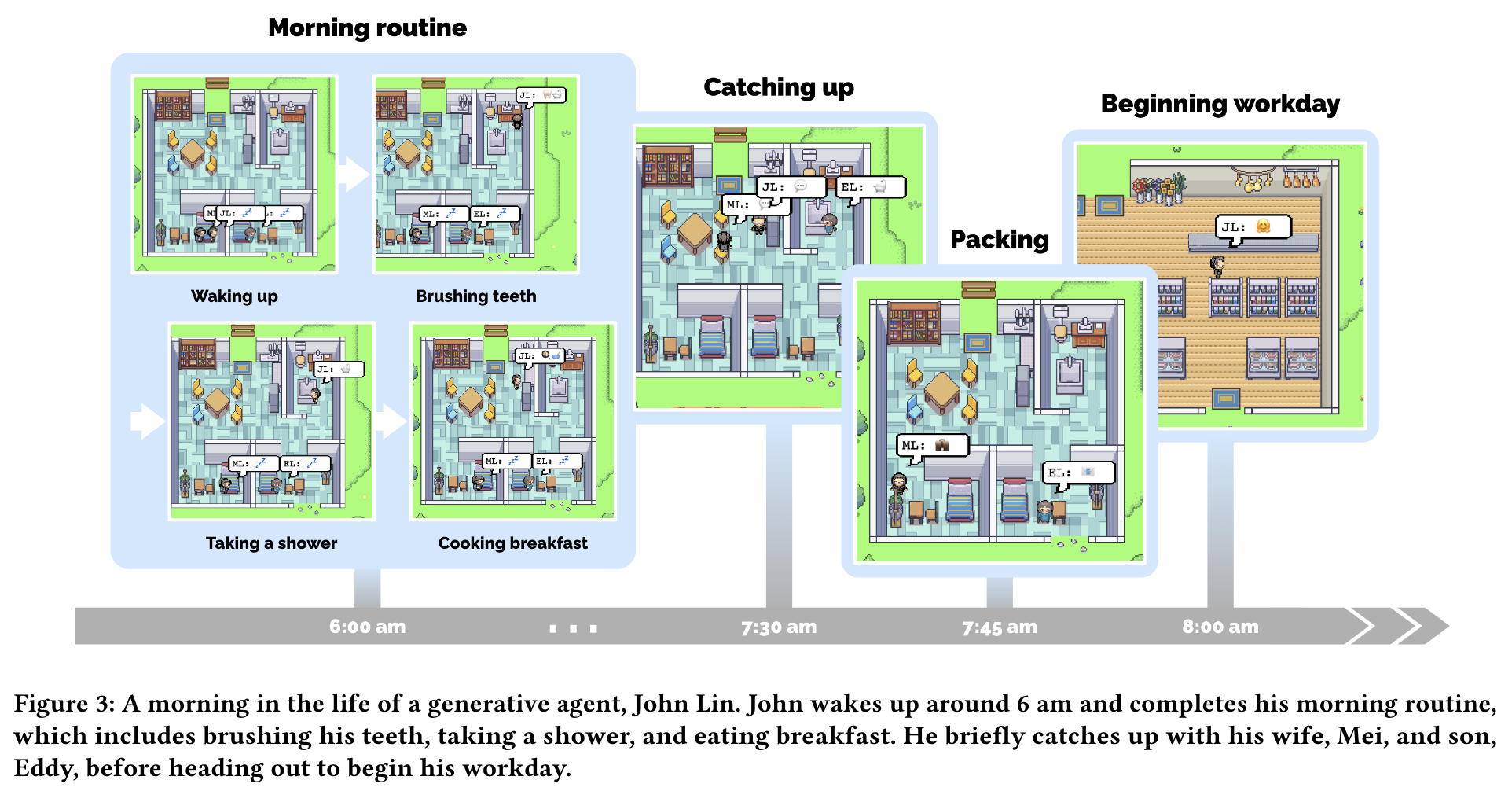
Example "Day in the Life"


Example "Day in the Life"


Example "Day in the Life"


Example "Day in the Life"


Emergent Social Behaviors
-
Information diffusion
-
Forming relationships
-
Coordination of activities
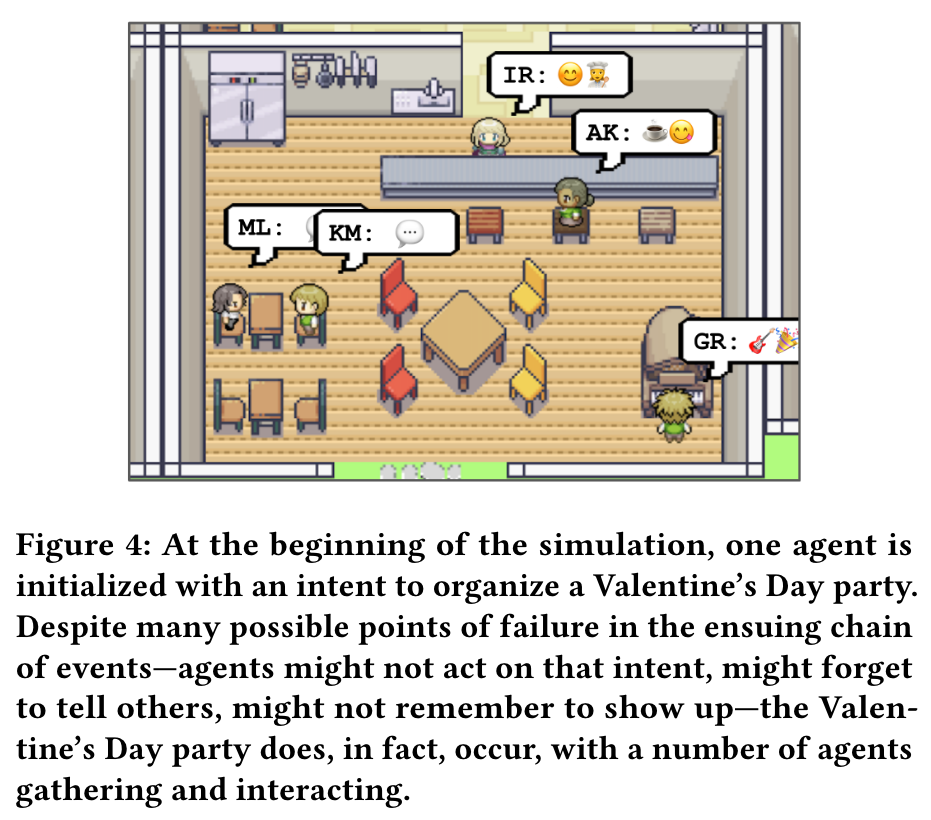
Generative Agents 🤖
Architecture
-
Memory stream logs experiences over time
-
Retrieval identifies relevant memories
-
Reflection synthesizes insights
-
Planning ensures coherent long-term behavior
-
Natural language interaction
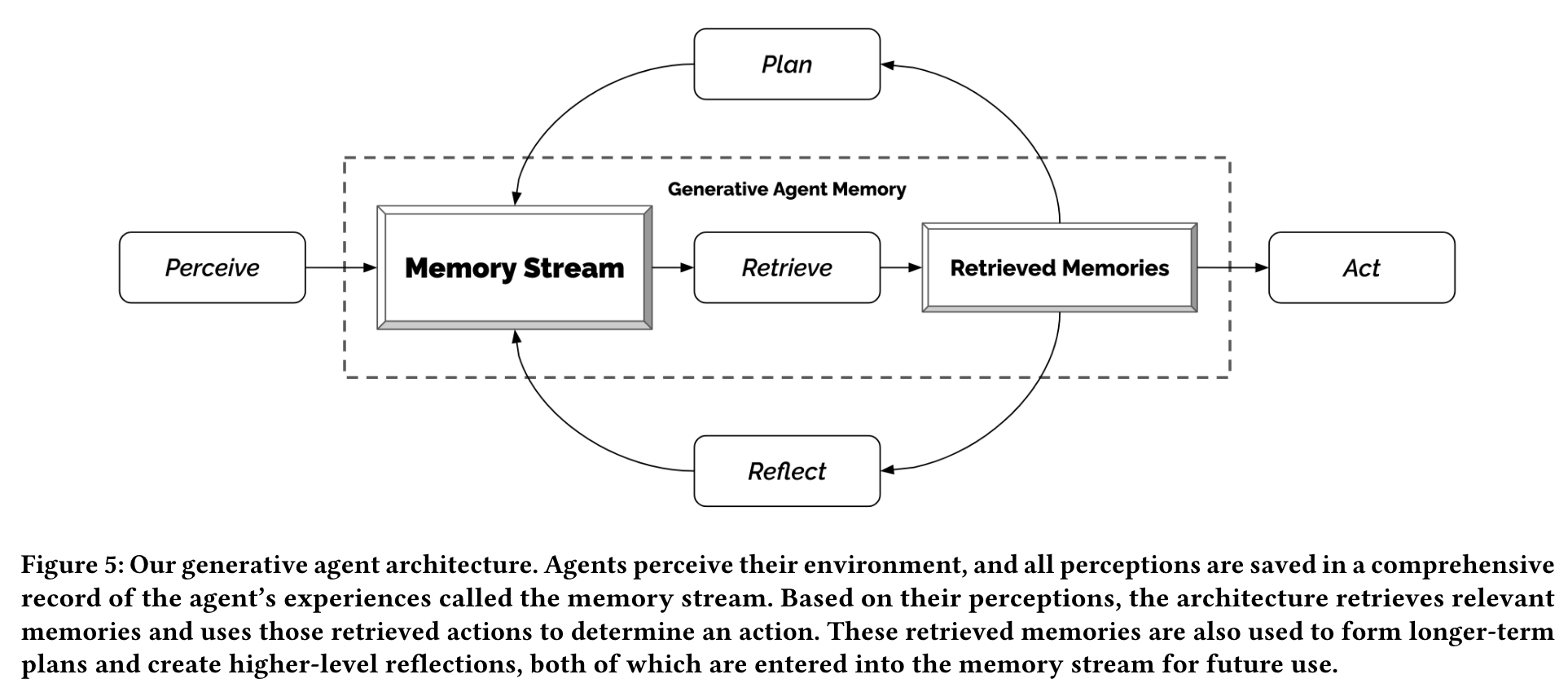
Memory Stream
-
Comprehensive permanent log of all experiences
-
Natural language descriptions
-
Retrieval finds contextual memories
-
Recency, relevance, importance scores
-
Recency. Exponential decay function with decay factor = 0.995
-
Importance. Asking the language model
-
Relevance. Use language model embedding vector, cosine similarity of memory and query
-
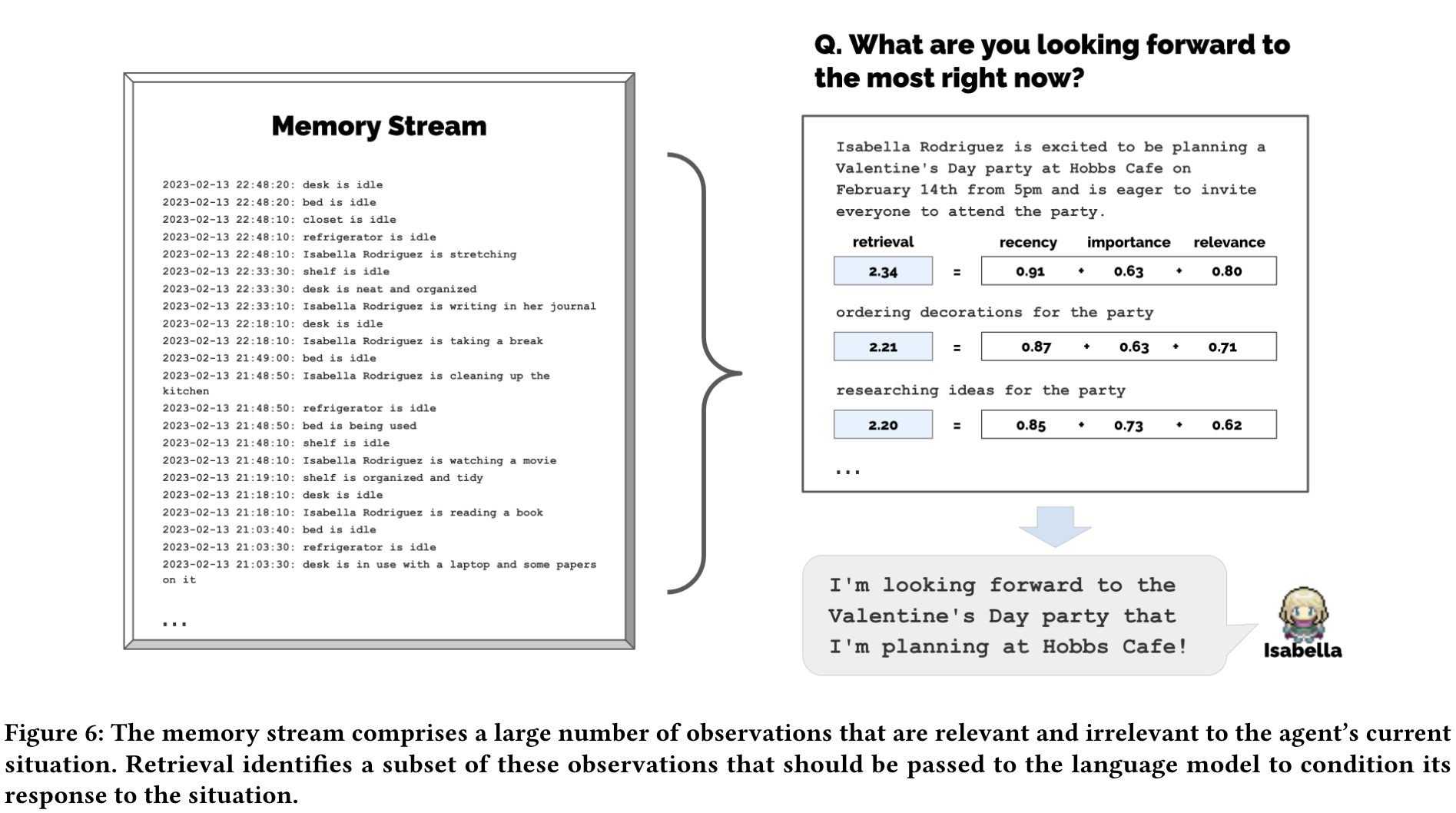
Reflection
-
Synthesizes lower-level memories
-
Generalizes experiences into abstractions
-
Derives higher-level insights
-
Enables reasoning beyond individual memories
-
Query the model with the 100 most recent records
-
Prompt the model to generate questions
-
Use generated questions to gather relevant memories
-
Prompt the model to extract insights and cite evidence
-
Store the statement as a reflection
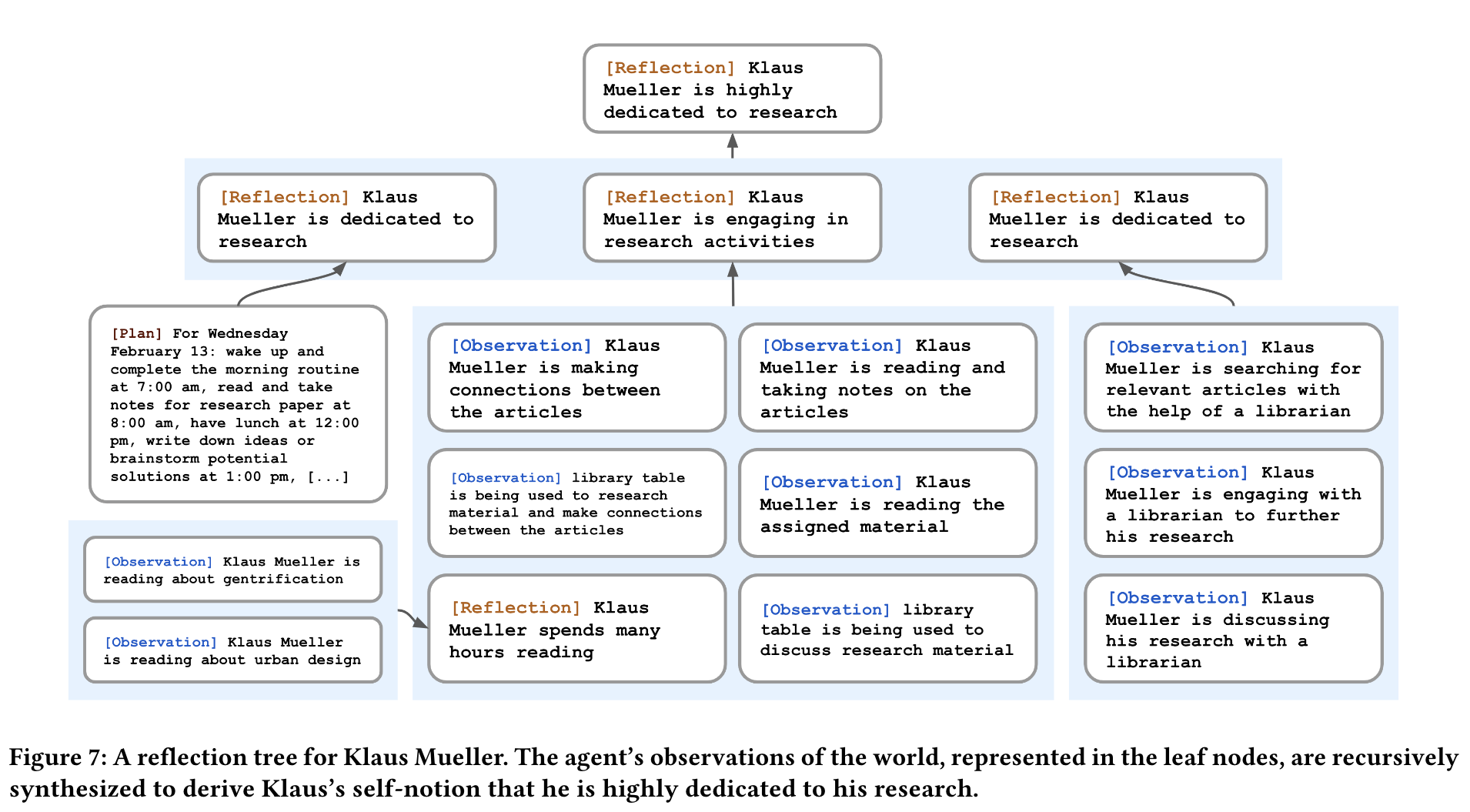
Planning
-
Outlines coherent sequences of activities
-
Operates at multiple time granularities
-
Interleaves planning, acting, replanning
-
Adapts plans dynamically when needed
-
Keeps behavior believable long-term
-
Create a plan that outlines day's agenda using language model
-
prompting with summary description + previous day
-
-
Add the generated plan to memory
-
Recursively decompose it to create finer-grained actions
Planning
Name: Eddy Lin (age: 19) Innate traits: friendly, outgoing, hospitable Eddy Lin is a student at Oak Hill College studying music theory and composition. He loves to explore different musical styles and is always looking for ways to expand his knowledge. Eddy Lin is working on a composition project for his college class. He is taking classes to learn more about music theory. Eddy Lin is excited about the new composition he is working on but he wants to dedicate more hours in the day to work on it in the coming days On Tuesday February 12, Eddy 1) woke up and completed the morning routine at 7:00 am, [. . . ] 6) got ready to sleep around 10 pm. Today is Wednesday February 13. Here is Eddy’s plan today in broad strokes: 1)Planning
...
Today is Wednesday February 13. Here is Eddy’s plan today in broad strokes: “1) wake up and complete the morning routine at 8:00 am, 2) go to Oak Hill College to take classes starting 10:00 am, [. . . ] 5) work on his new music composition from 1:00 pm to 5:00 pm, 6) have dinner at 5:30 pm, 7) finish school assignments and go to bed by 11:00 pm.”Planning
work on his new music composition from 1:00 pm to 5:00 pm1:00 pm: start by brainstorming some ideas for his music composition
[...]
4:00 pm: take a quick break and recharge his creative energy before reviewing and polishing his composition.Dialogue Generation
-
Conditions on memories of other agent
-
Retrieves context from past interactions
-
Maintains consistency in conversations
-
Grounding in relationship history
-
Context-appropriate responses
Sandbox Implementation
-
Built using Phaser game engine
-
Server tracks agent state changes
-
Actions translated between NL & engine
-
Users initialize agents with descriptions
-
Agents have partial env representations
📊
Evaluation
Controlled Evaluation
-
Interview agents independently
-
5 question categories on capabilities
-
Self-knowledge: "Give an intro of yourself"
-
Memory: "Who is [name]?"
-
Plans: "What will you be doing at 10 am tomorrow?"
-
Reactions: "Your breakfast is burning! What would you do?"
-
Reflections: "If you were to spend time with one person you met recently, who would it be and why?"
-
-
Compare full architecture to ablations
-
Human-authored baseline for grounding
-
Ranked for believability by evaluators
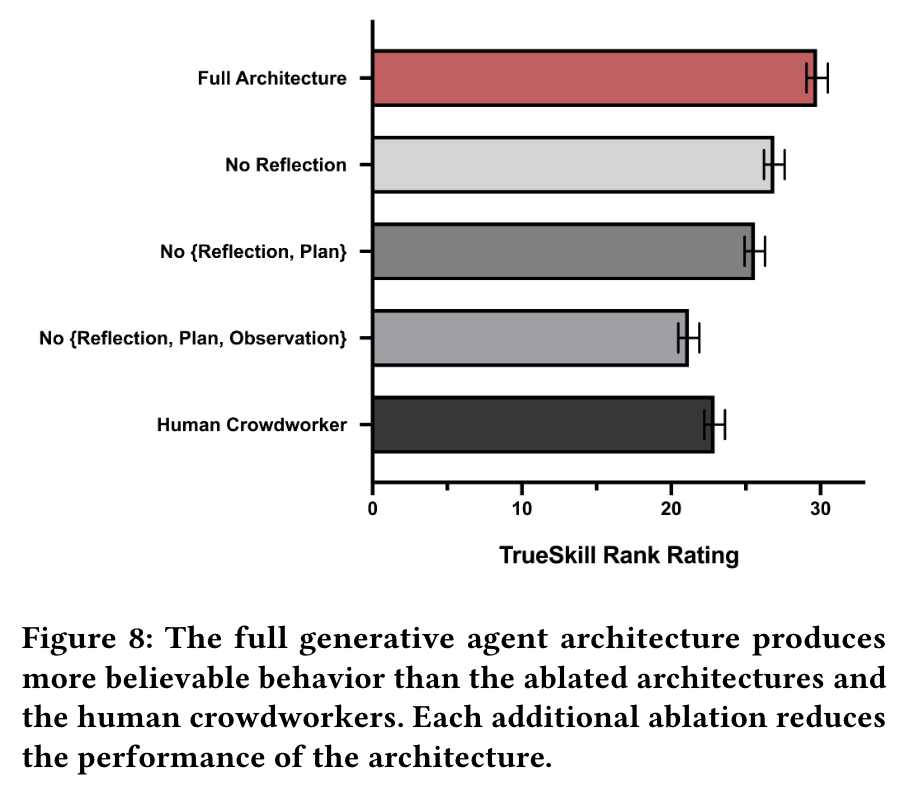




Kruskal-Wallis: (𝐻 (4) = 150.29, 𝑝 < 0.001)
Pairwise differences between conditions were significant (𝑝 < 0.001)
End-to-End Evaluation
-
25 agents interact over 2 days
-
Analyze emergence of dynamics:
-
Information diffusion:
-
Sam's candidacy for village mayor, Isabella's Valentine's Day party
-
Percentage of agents holding the information at the end
-
-
Relationships forming:
-
"Do you know [name]?"
-
Undirected graph density: 𝜂 = 2 ∗ |𝐸|/|𝑉|(|𝑉| − 1)
-
-
Coordination of activities
-
# of agents who actually showed up to the party after hearing about it
-
-
-
Identify limitations:
-
Memory retrieval issues
-
Boundary condition behaviors
-
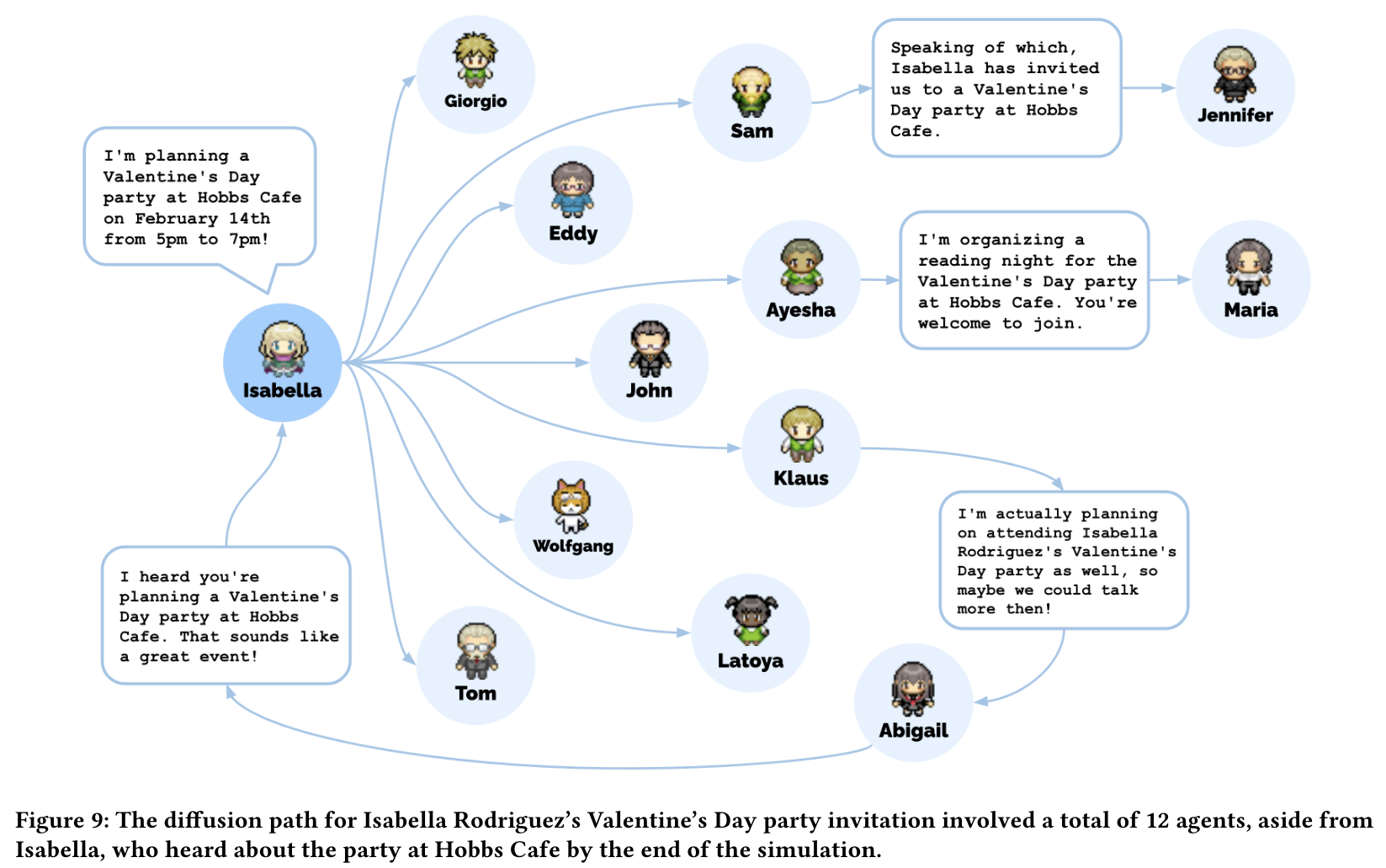
Discussion &
Conclusion
Limitations & Future Work
-
Implementation:
-
Retrieval module
-
Improve performance and make it more cost-effective
-
Parallelizing agents or developing specific LMs for generative agents
-
-
Evaluation:
-
Evaluations limited in scope and duration
-
Behavior complexity/diversity still low
-
Robustness of the agents
-
Any imperfection of LLMs are inherited
-
-
Risks around misinformation need addressing
-
Testing large-scale agent populations
Conclusion
-
Novel architecture for behavioral agents
-
Initial capabilities show promise
-
Much more research needed to realize vision
-
Helps define new subfield of generative agents